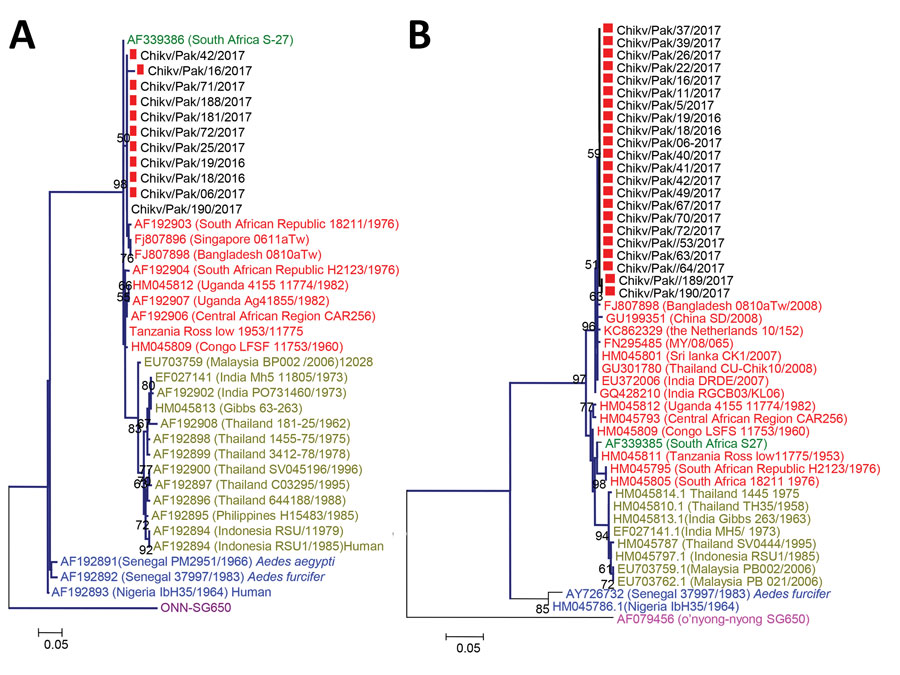Volume 26, Number 2—February 2020
Dispatch
Emergence of Chikungunya Virus, Pakistan, 2016–2017
Figure 2

Figure 2. Phylogenetic tree of chikungunya viruses collected from patients in Pakistan, December 20, 2016–May 31, 2017 (red squares), and reference viruses. The tree was generated by the maximum-likelihood method based on the nucleotide sequence of the partial envelope 1 (A) and nonstructural protein 1 (B) genes. Red text indicates East/Central/South African genotype; yellow text indicates Asian genotype; green text indicates South African genotype; blue text indicates West African genotype; and purple text indicates o’nyong-nyong virus ancestral strain. GenBank accession numbers are provided for reference viruses. Scale bars indicate nucleotide substitutions per site.
Page created: January 19, 2020
Page updated: January 19, 2020
Page reviewed: January 19, 2020
The conclusions, findings, and opinions expressed by authors contributing to this journal do not necessarily reflect the official position of the U.S. Department of Health and Human Services, the Public Health Service, the Centers for Disease Control and Prevention, or the authors' affiliated institutions. Use of trade names is for identification only and does not imply endorsement by any of the groups named above.